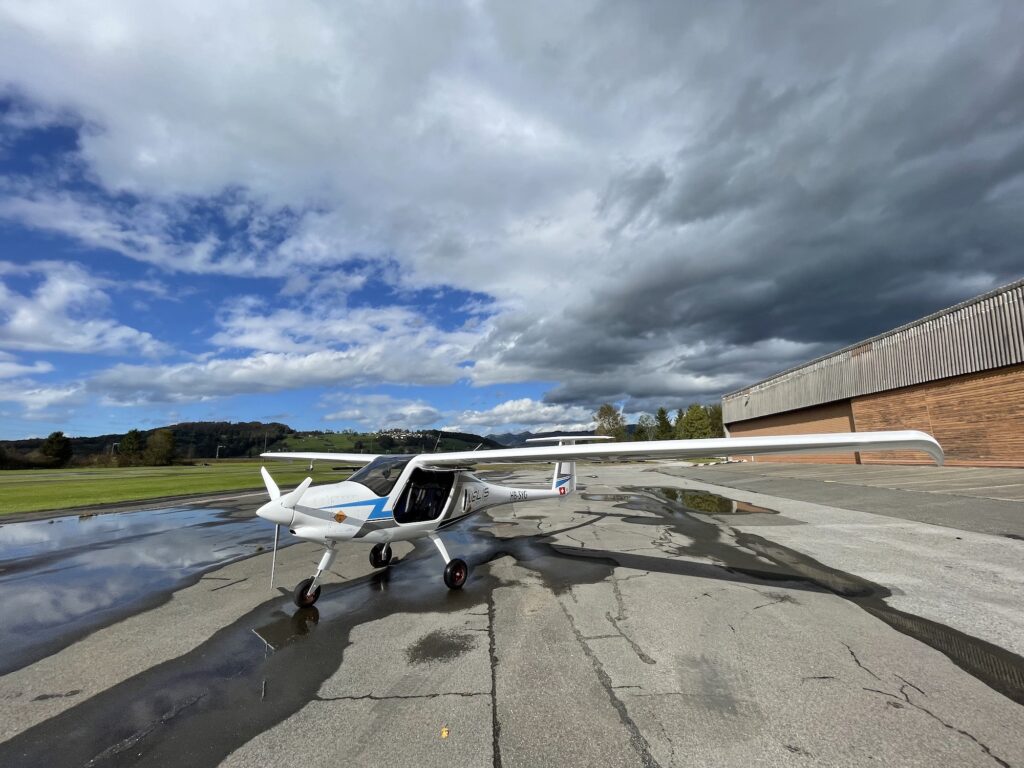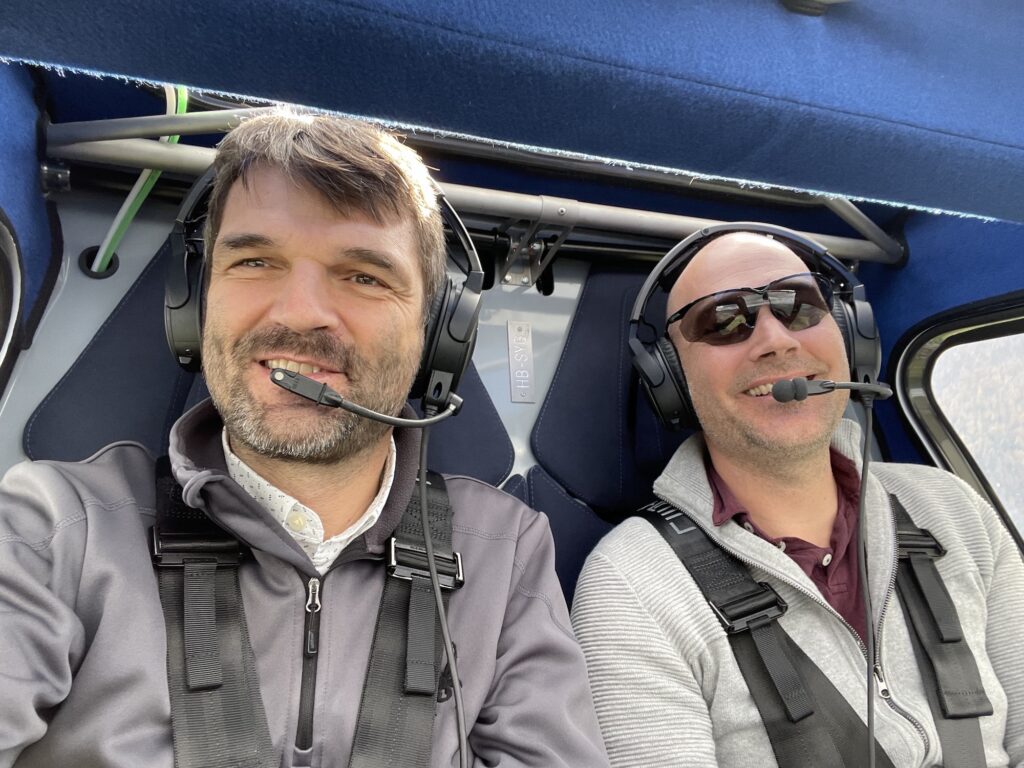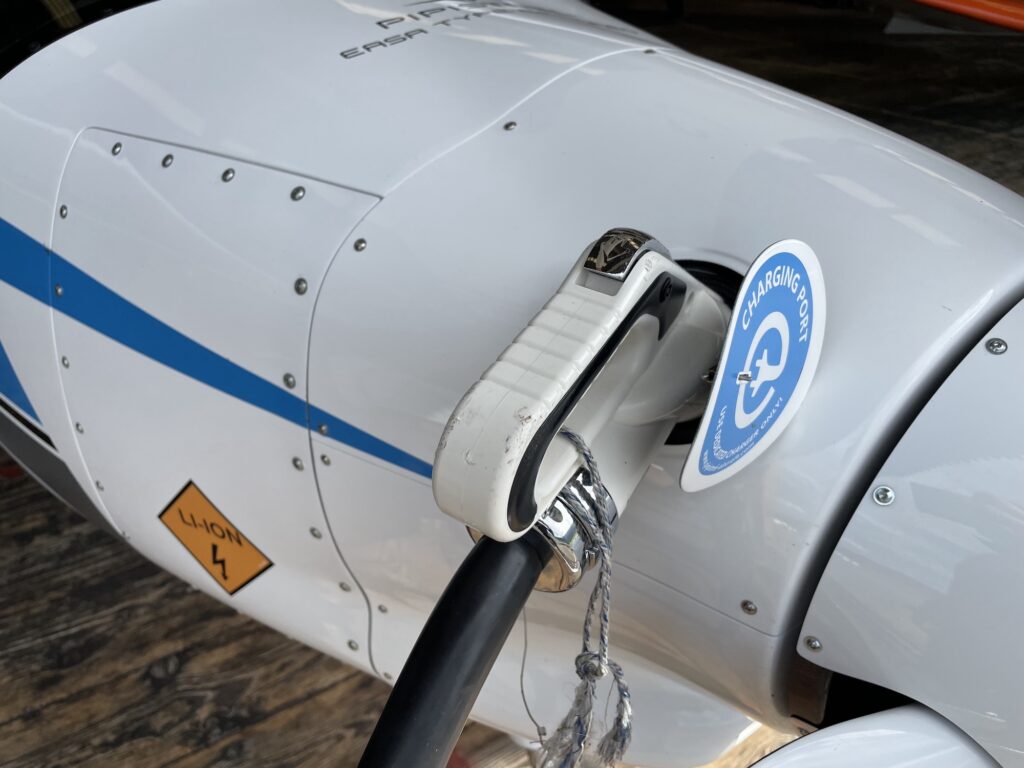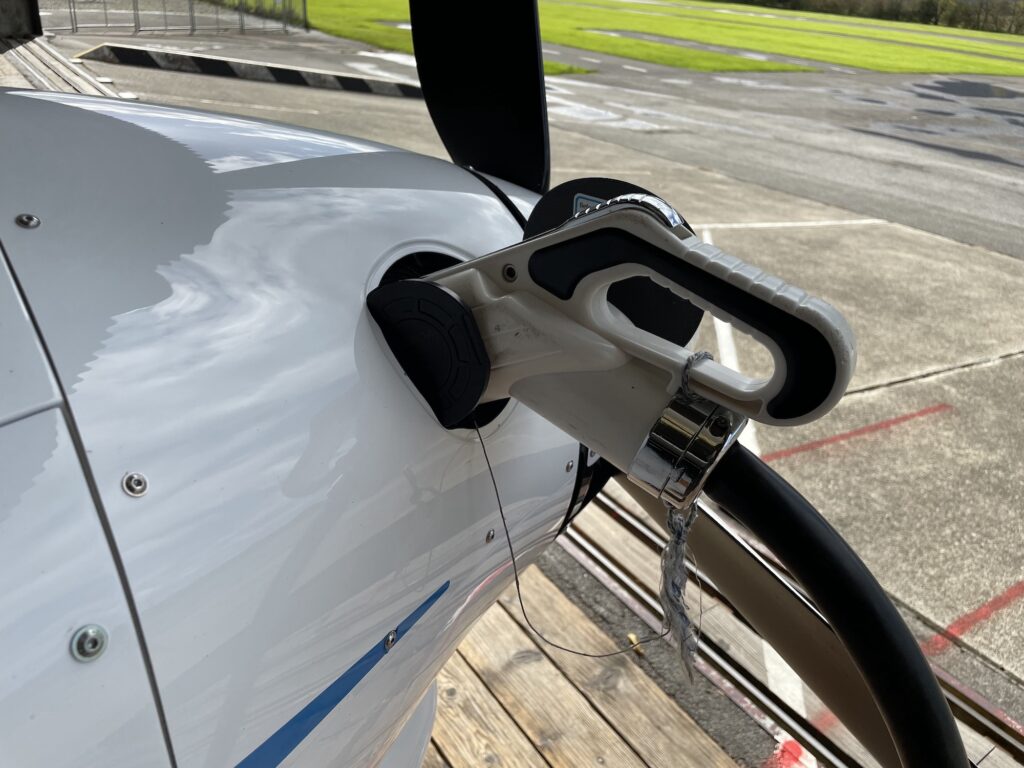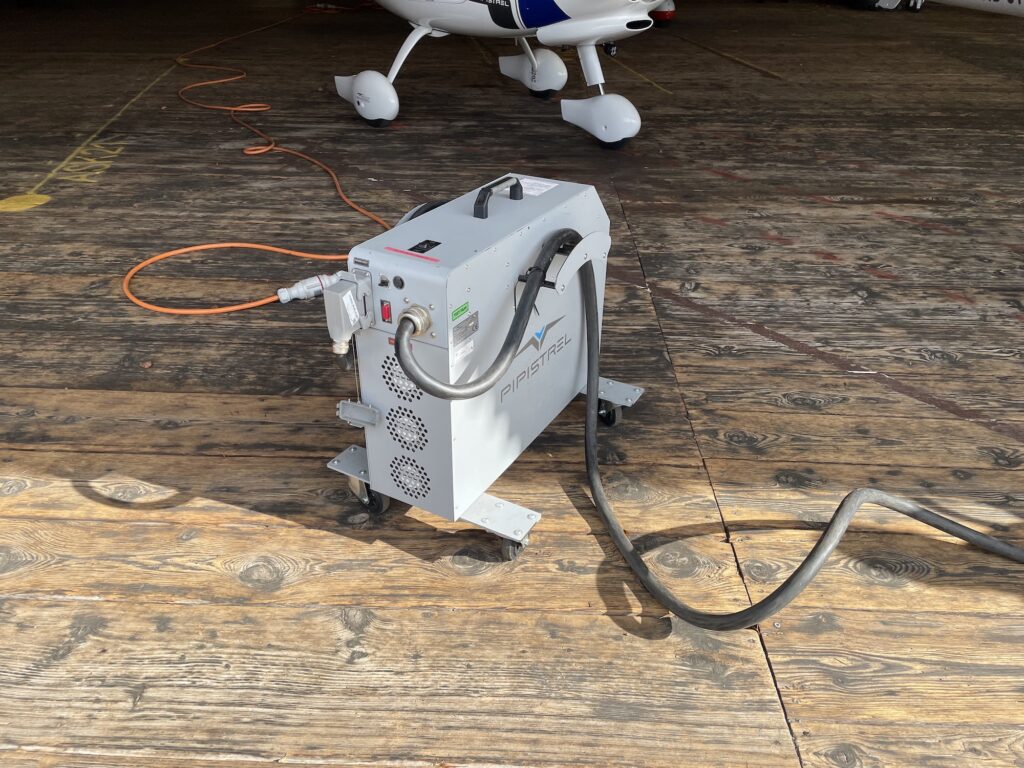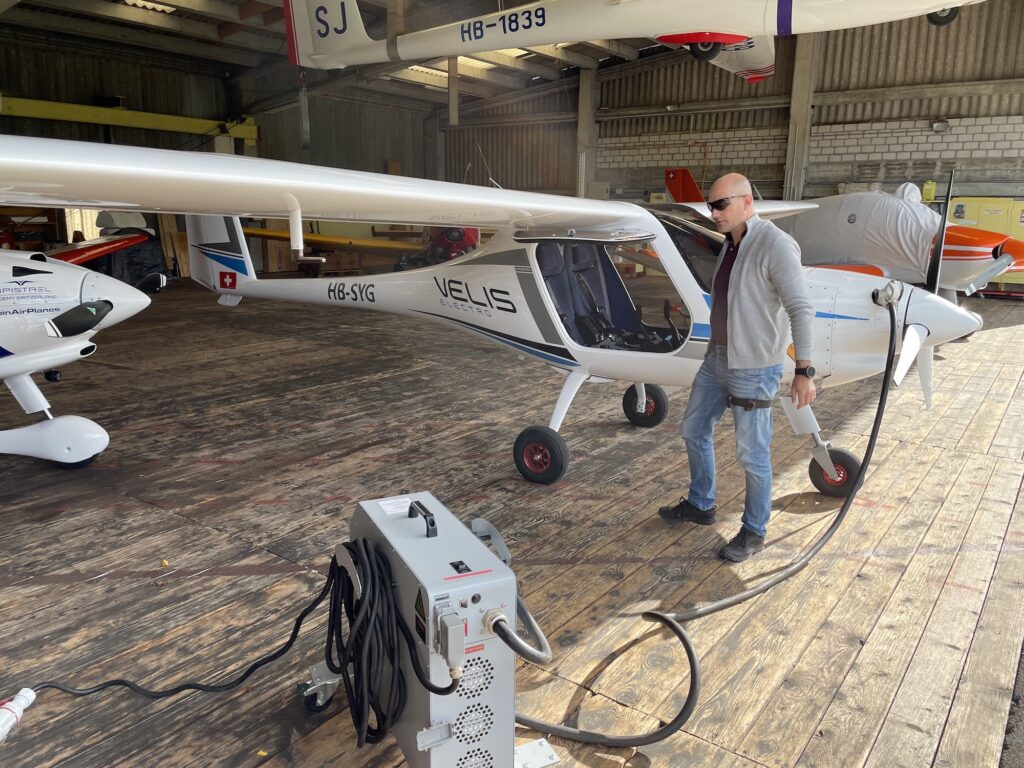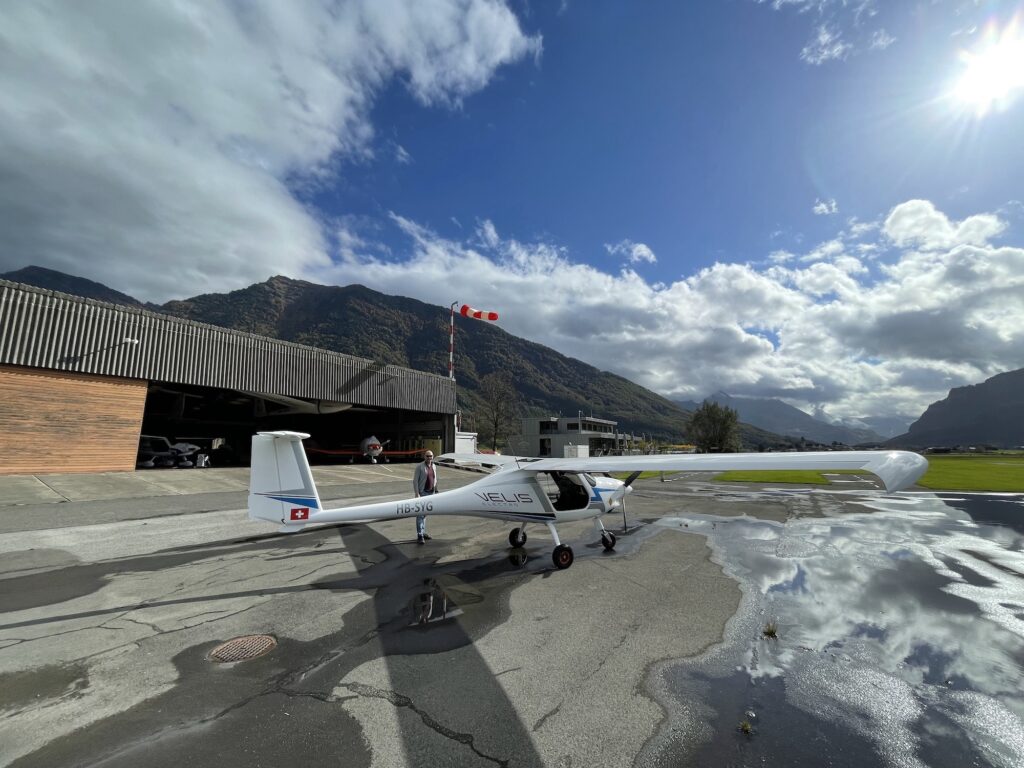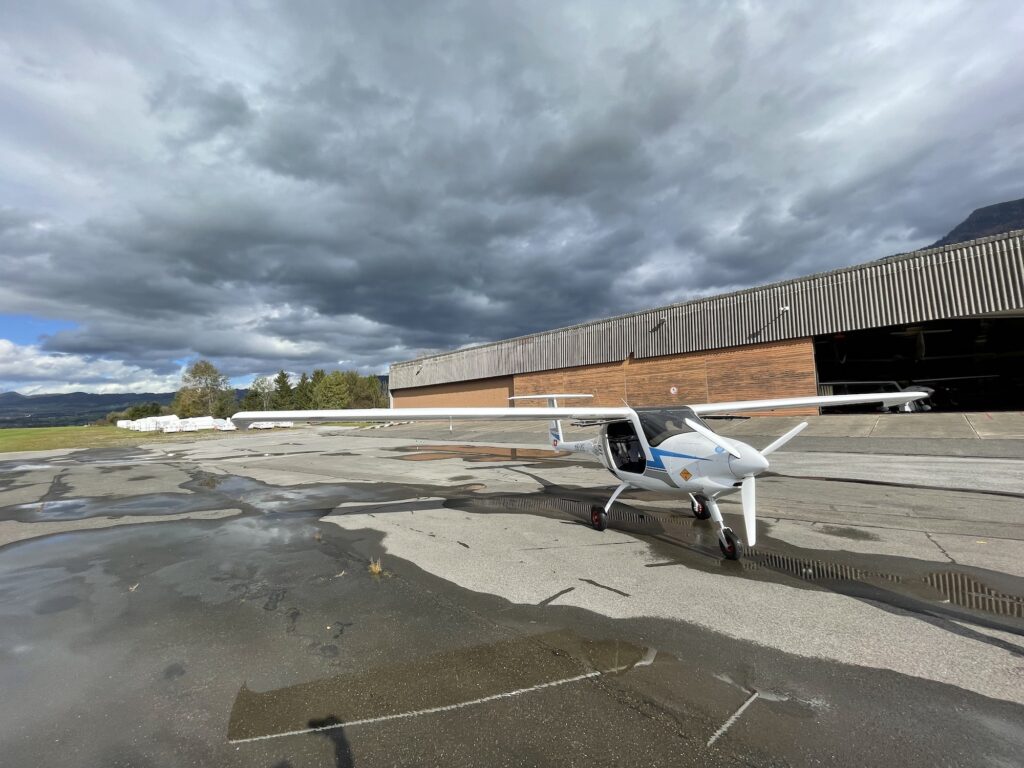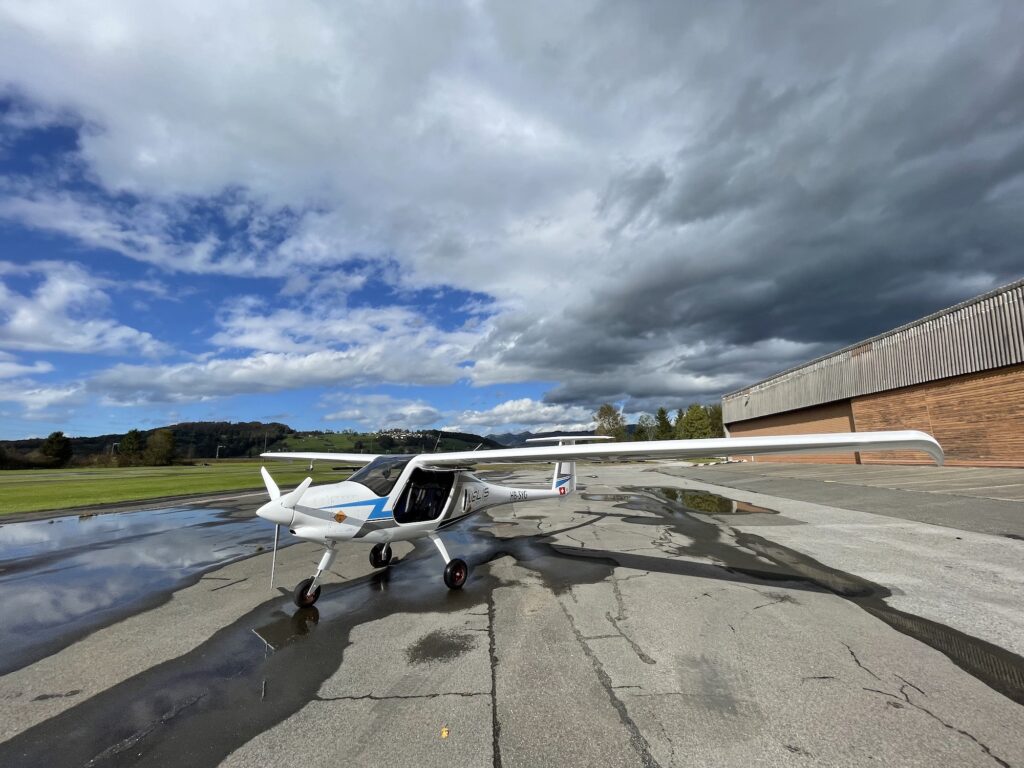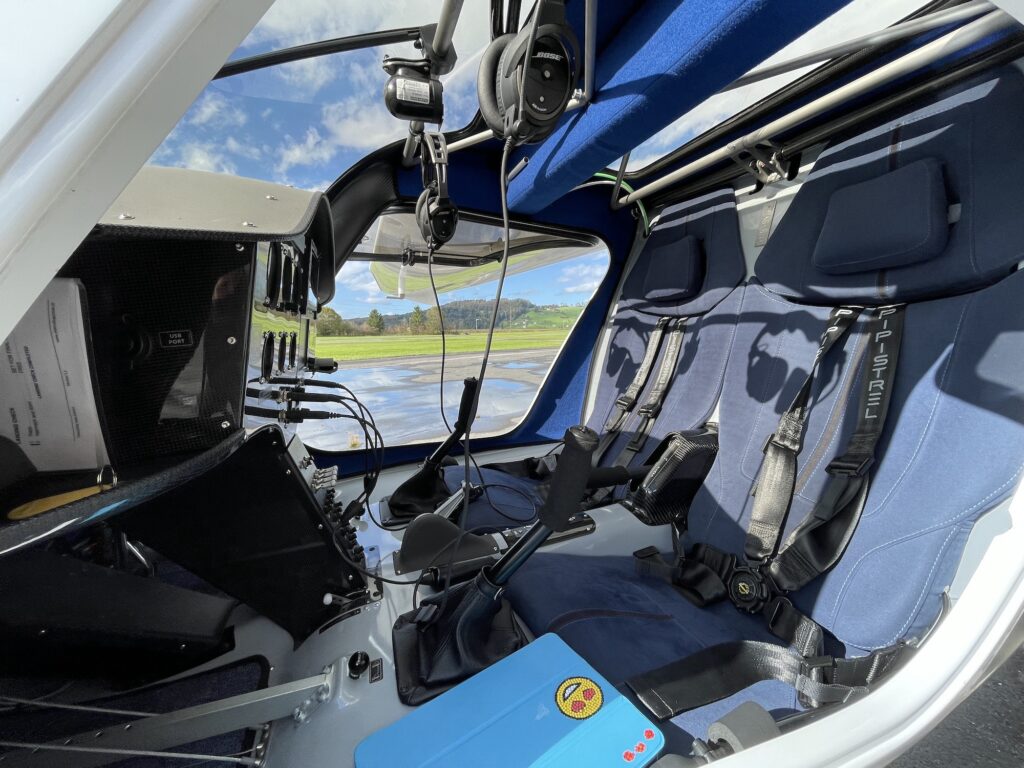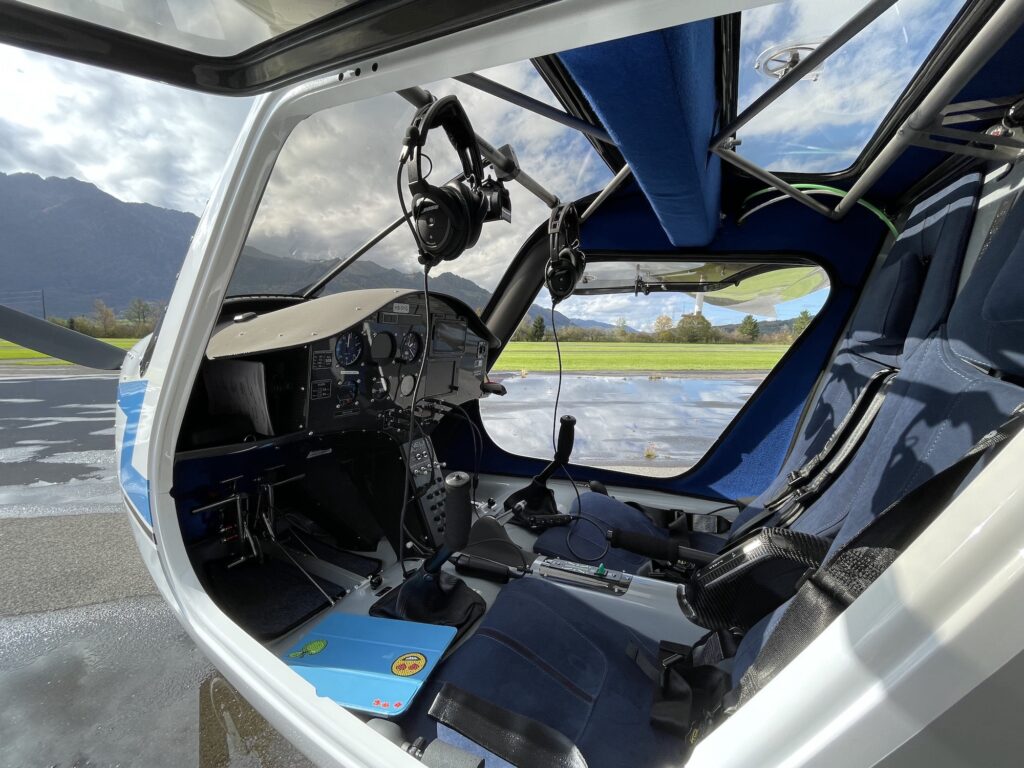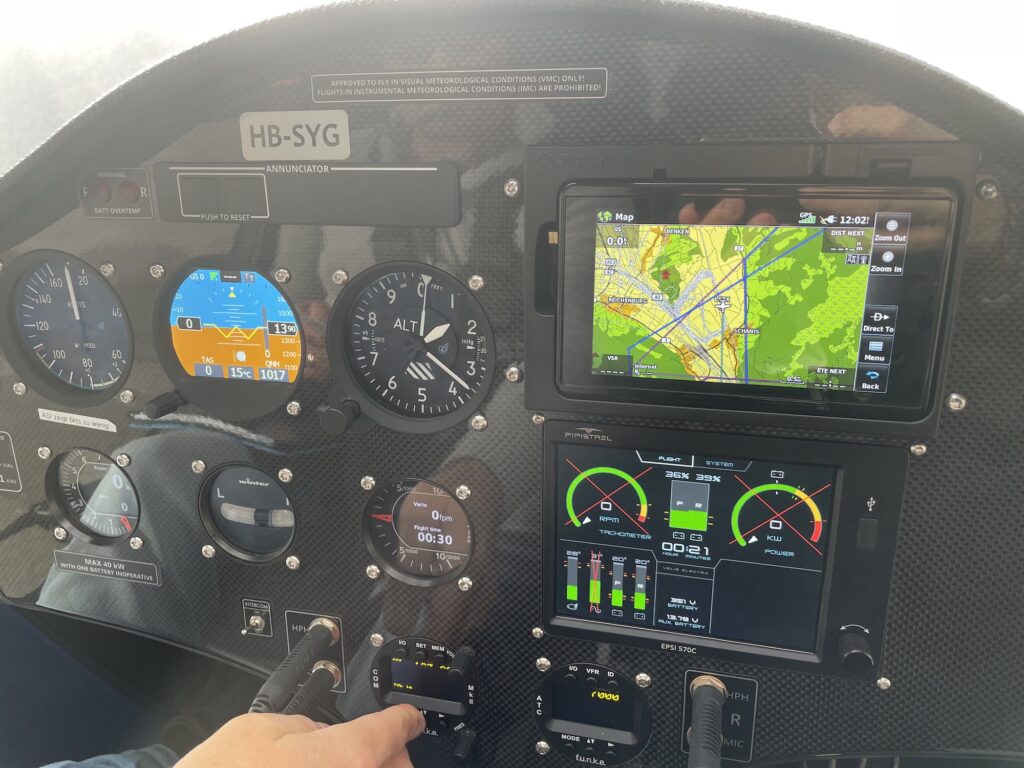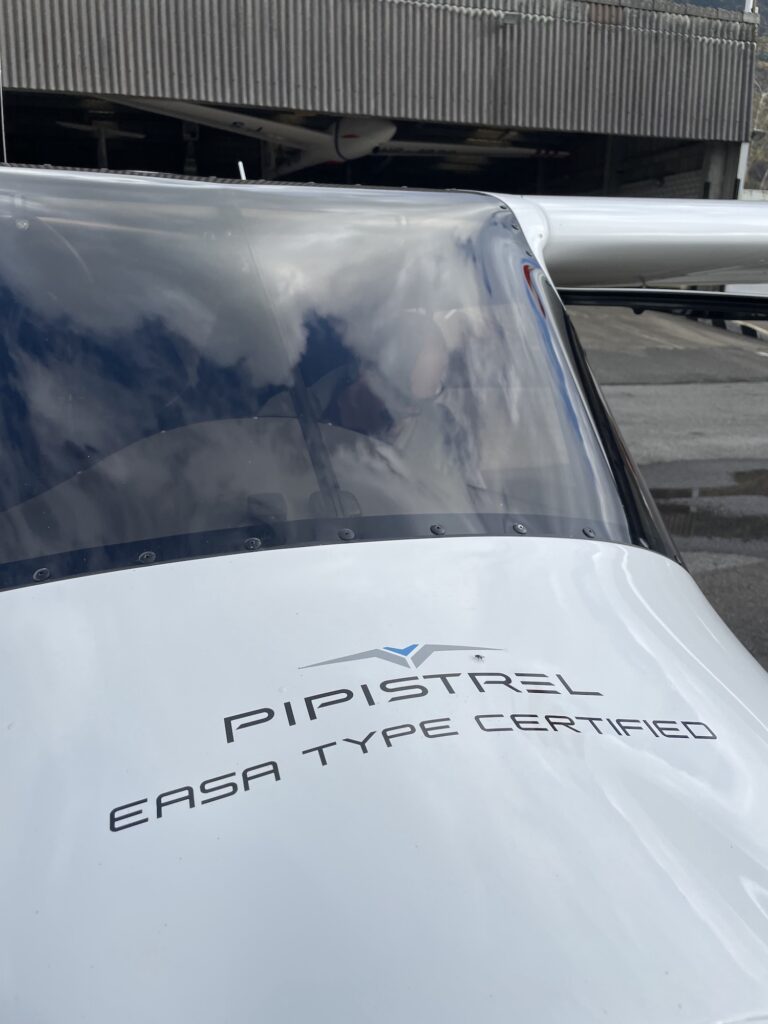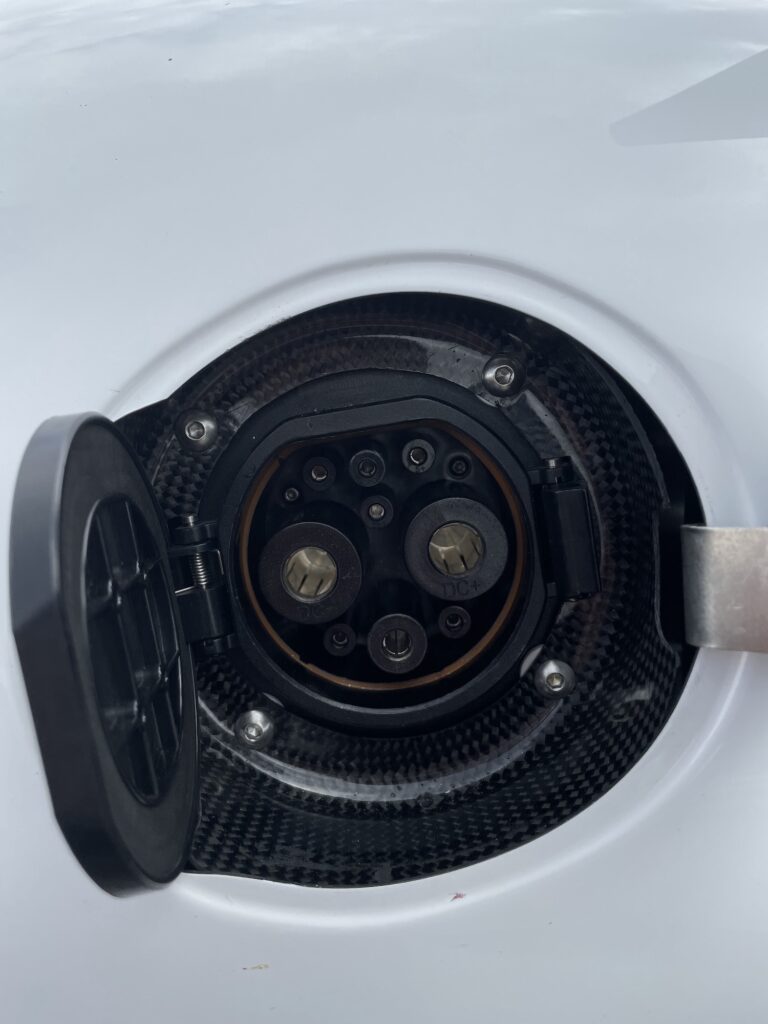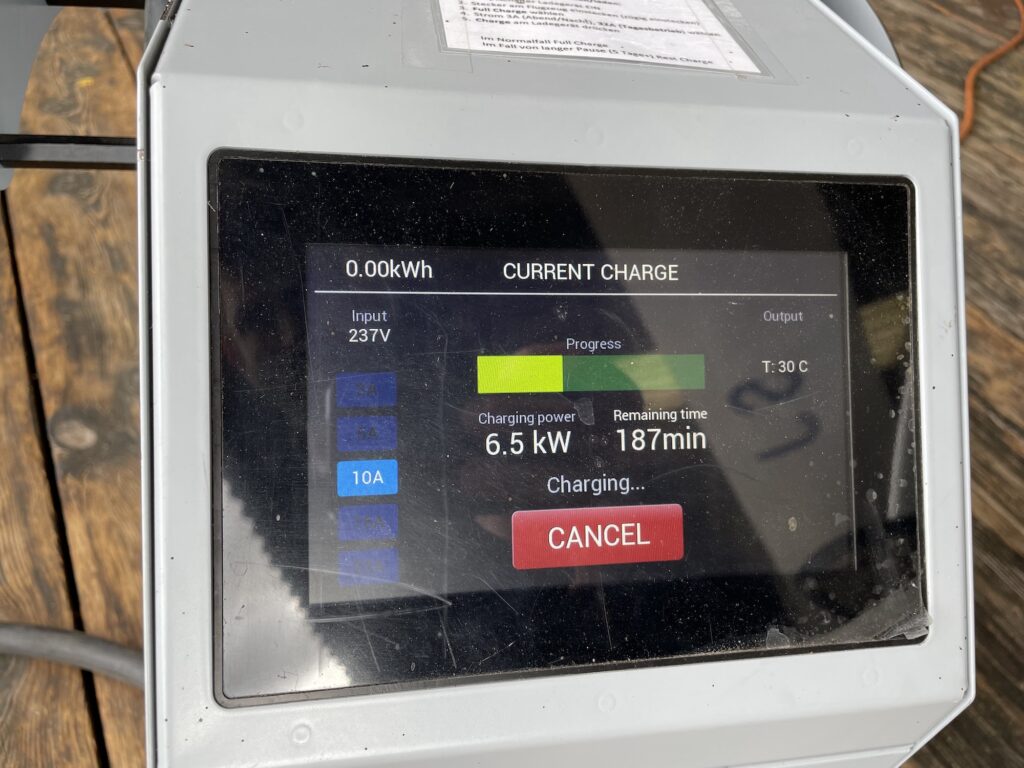In the golden autumn in Switzerland, I had the special honor of giving Mario Herger, the well-known futurologist from Silicon Valley, a sightseeing flight in an electric airplane.
Mario has been interested in trends and technologies for years, has been keeping a close eye on electrification and the development of autonomous driving in California, and was curious to see what was developing in the aviation sector.
Here is his report, which also appeared on his blog “The Last Driver License Holder”:

In mid-October, the electric aircraft world record holder, Morell Westermann, took me on a short sightseeing flight over two Swiss lakes in his record-breaking aircraft. With the battery-electric small aircraft from the Slovenian manufacturer Pipistrel, he demonstrated the stand of electric aircraft to me. As with electric cars, this vehicle is noticeable due to the absence of noise and vibrations. Where electric planes are today, electric cars were 10 years ago. And hardly anyone could have imagined at the time how widespread electric cars would be by the end of 2021. In fact, in October 2021, almost a fifth of all new registrations in Germany were battery-electric cars. If the trend continues like this, then from mid-2023 (!) Half of all new registrations in Germany will be electric cars. Norway is already one step further. There, electric cars make up three quarters of all new registrations, gasoline and diesel engines together only reach five percent with difficulty. If this trend continues, the last combustion vehicles will be sold in the land of the midnight sun in April 2022. The power of exponential processes in technology adoptions is once again impressively demonstrated.
The ringing of cowbells in the meadow outside the Schänis airfield in the St. Gallen municipality of the same name south of Zurich is already the loudest sound I will hear for the next hour. The futurologist and electric aircraft world record holder Morell Westermann has invited me to take a short sightseeing flight on the world record aircraft. In the process, we flew in a loop first southeast to Lake Walen, and then over Lake Zurich and Lake Obersee to land again after just under 40 minutes.
The special feature here is the aircraft itself: it comes from the Slovenian small aircraft manufacturer Pipistrel, which produces the first electric aircraft. The Velis Electro is a 428-kilogram two-seater whose electric battery, with a capacity of 24.8 kWh, delivers a maximum takeoff weight of 600 kilograms into the air with a power of 57.6 kW. The maximum speed is 108 knots (200 km/h) and bridges with this battery capacity a distance of 100 kilometers. In fact, however, the propeller could also be used for recuperation, as we already know from electric cars when braking and driving downhill. However, this function is not yet approved.
The most noticeable thing during the flight is the silence and the lack of vibration, which otherwise dominate a flight. This characteristic of the electric aircraft also allows the machine to be used at airfields designated for glider pilots and at times when air traffic is not scheduled for noise protection reasons. This particular aircraft is used at Schänis airfield, where among the 500 pilots 350 have glider licenses, mainly for training. Thus, the aircraft is mainly used for aerodrome rounds, but is hardly suitable for long-distance flying.
The space in the aircraft itself is cramped, but you get to experience the flying much more directly. You almost feel like the aviation pioneers who sat in the open with goggles and leather helmets. The instrument panel is also tidier and clearer than in aircraft with combustion engines. According to Morell, electric aviation is at the level where electric cars were 10 years ago. The aircraft industry is also benefiting from the increased investment in battery development for electric vehicles. There are still no installed charging stations at the Schänis airfield, as at the other airports, but the transportable charging stations already allow aircraft to be charged. On average, the charging process takes about one hour.
The Swiss weather, at least, was kind to us, and the predicted rain and wind had passed elsewhere.

